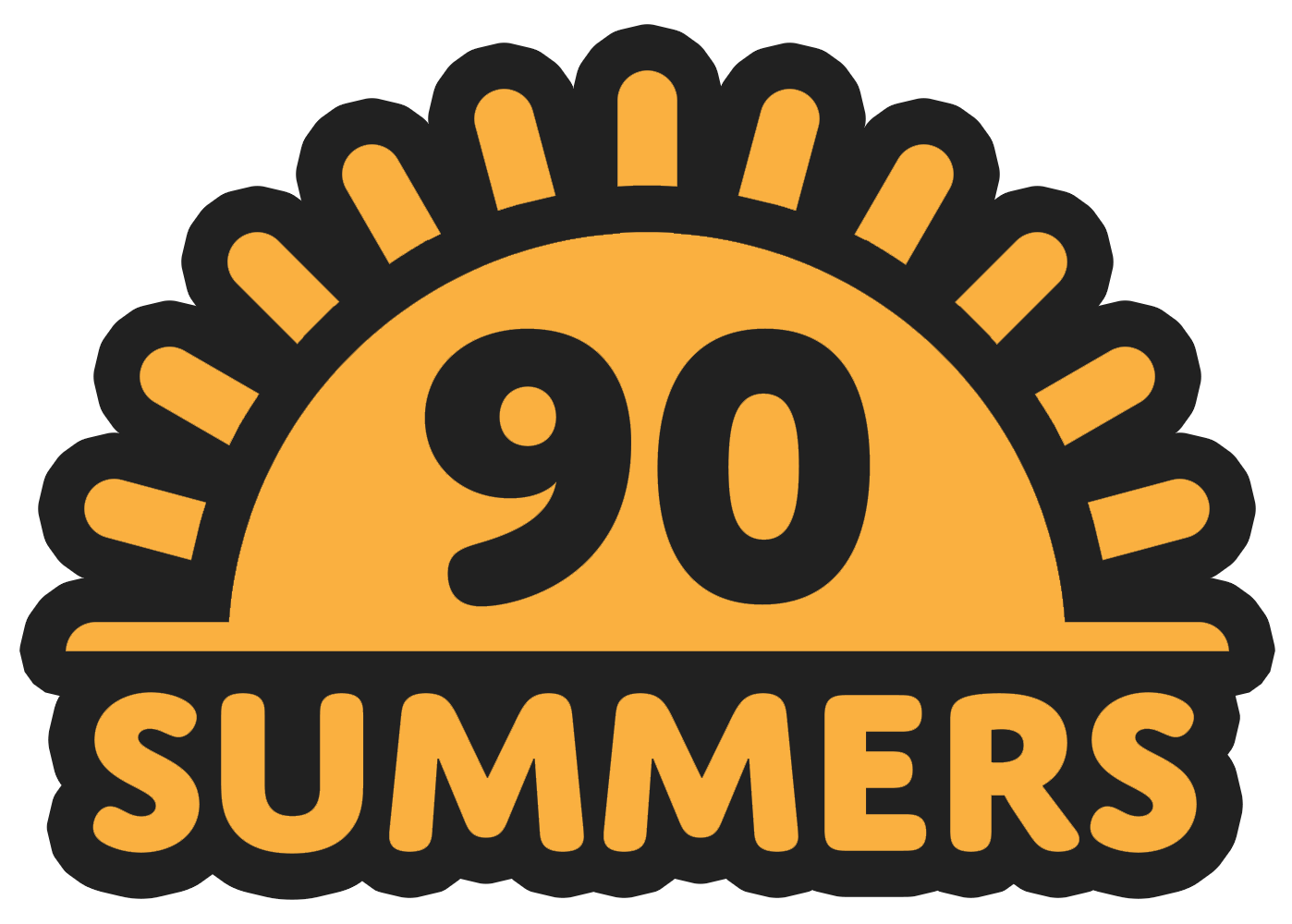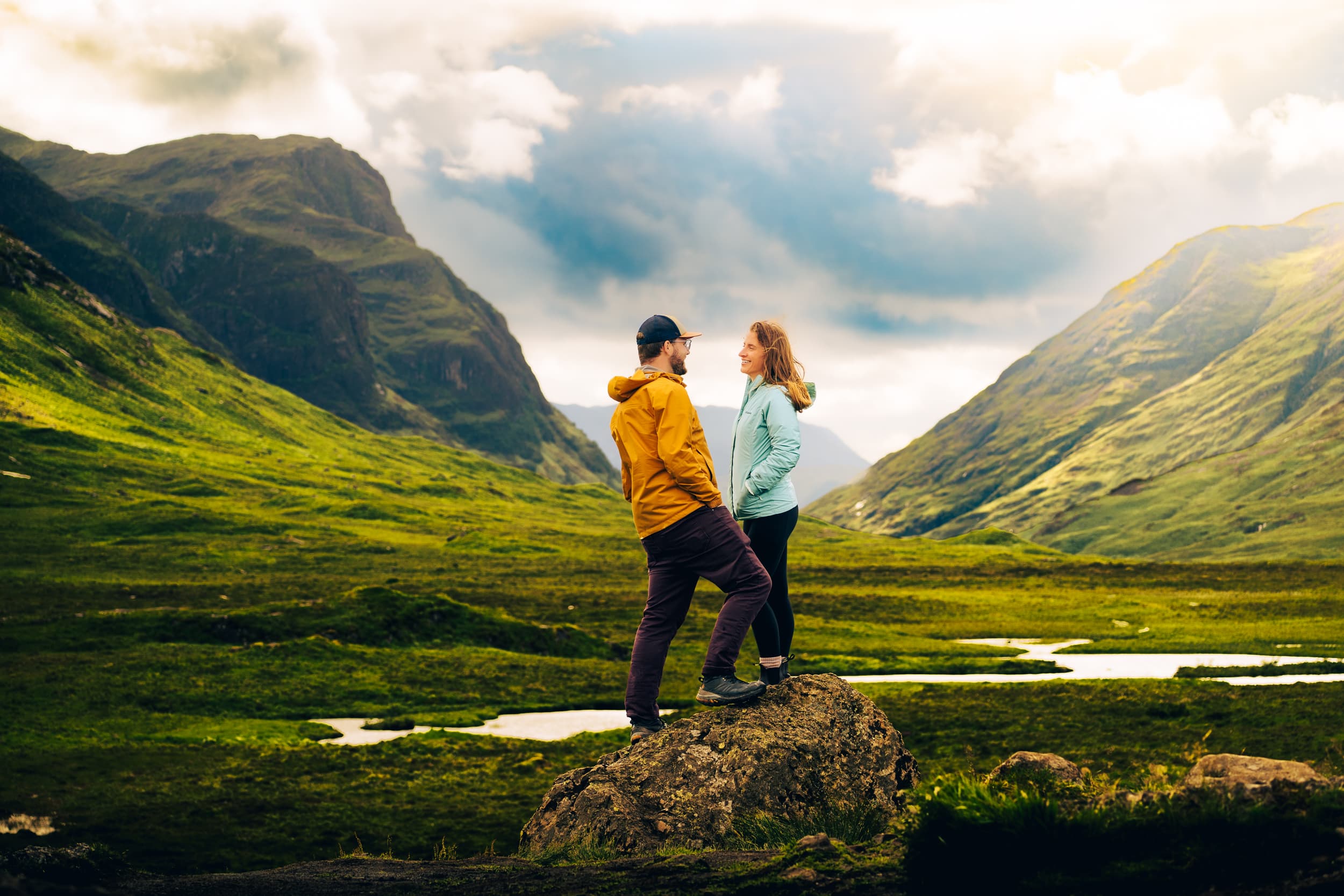Katmai is one of the most unique U.S. National Parks, with one of the highest concentrations of brown bears on the planet. But it’s not exactly the kind of national park that you can just stroll up to and see some bears—it’s also one of the most remote national parks in the country and the bears are only in certain accessible areas of the park at certain points in the year. So if you want to see one of the largest land predators on the planet for yourself, here’s everything you need to know about bear viewing in Katmai National Park.
This post may contain affiliate links. If you make a purchase through them, we may receive a small commission, for which we are extremely grateful, at no extra cost to you.
Where is Katmai National Park?
Katmai National Park is located on the Alaskan Peninsula along the southern coastline of Alaska, approximately 300 miles southwest of Anchorage, as the crow flies.
The park is extremely remote—there’s no roads leading to or from it. Accordingly, the only way to get there is by flying or taking a boat.
How to See Bears in Katmai National Park
Katmai National Park is home to a ton of brown bears—2,200, in fact—because of its richness in food resources, including clams, mussels, and, most famously, salmon.
There’s several different ways that you can see brown bears for yourself in this park, which sprawls a whopping 6,300 square miles or the fourth largest U.S. National Park!

Watching bears at the Brooks Falls platform
The most popular place for visitors to see bears in the park is Brooks Falls, a 6-foot waterfall along the Brooks River.
Every summer, hundreds of thousands of spawning salmon fight their way upstream in Brooks River, serving as the perfect fishing spot for the hungry bears that are desperately trying to put on weight for their winter hibernation.
In fact, the river is SO rich with salmon here that these usually territorial creatures hunt peacefully, side-by-side. When my husband, Justin, and I visited Katmai, a ranger told us that there can be as many as 60 bears at Brooks Falls at one time, during the peak salmon season!
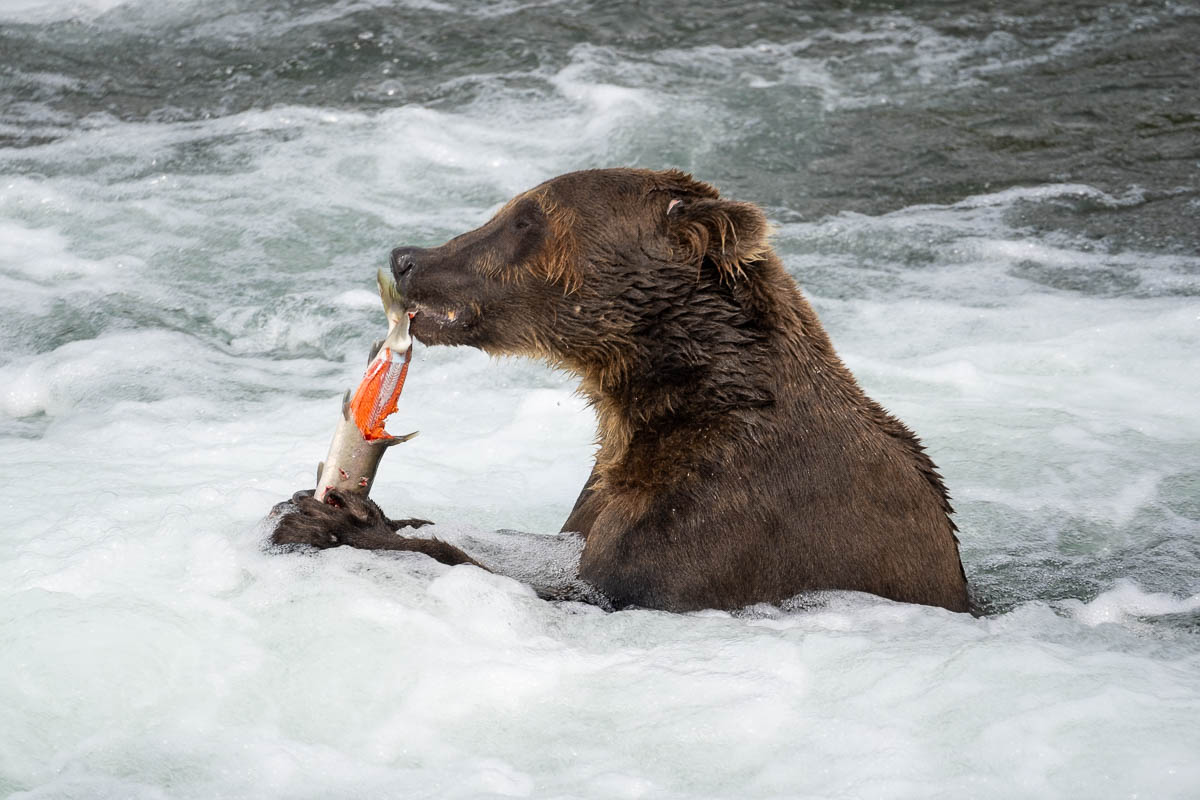
While it usually wouldn’t be a great idea to just walk up to a hoard of 60 hungry brown bears, there’s conveniently a series of elevated wooden boardwalks and platforms along Brooks River and next to Brooks Falls, where visitors can safely observe the bears.
When Justin and I visited, we couldn’t believe how close we could get to the bears as they fished in Brooks Falls on these platforms. Sometimes, there would be a massive bear ambling by directly below our feet and, other times, there would be a massive one just 10 feet in front of us. It’s SUCH a unique experience and one of the only places in the world you can get so close to these enormous creatures.
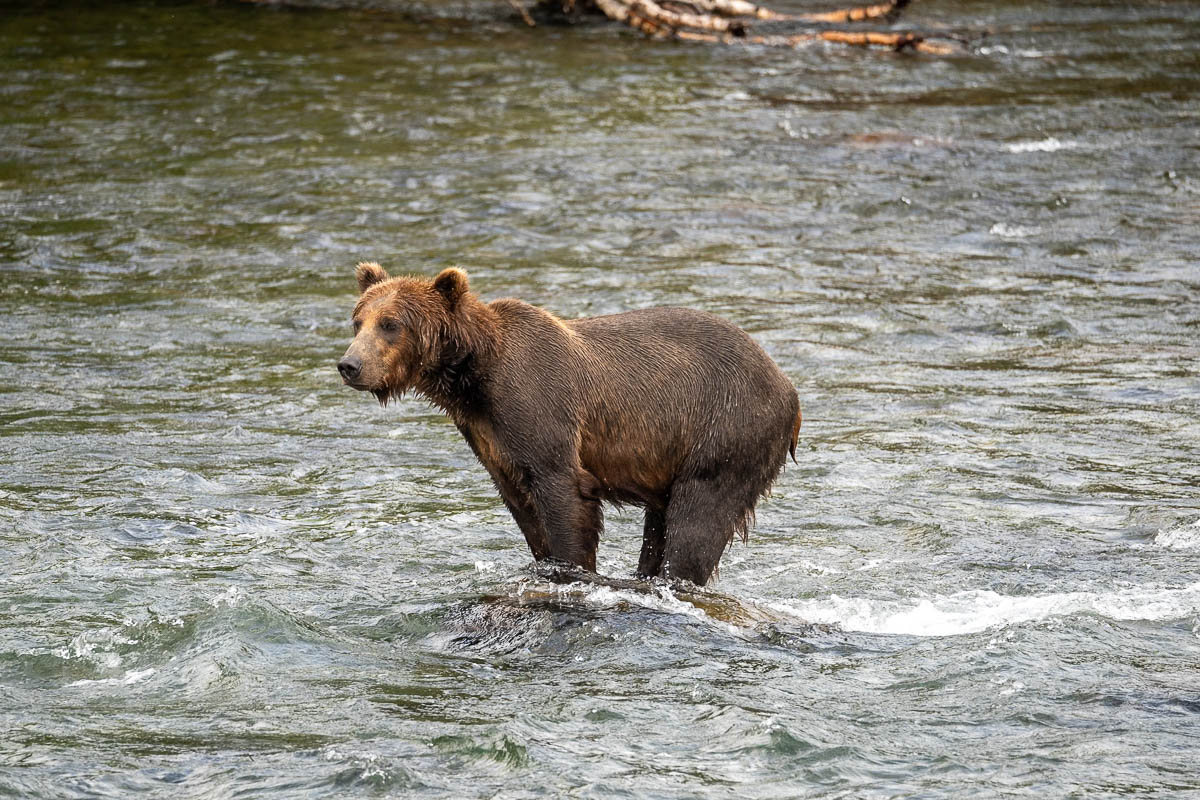
There’s no need for a guide or permit to reach these platforms. Once you’ve reached the Brooks Camp section of the park (where most tours or service operators will drop you off), you’ll just need to follow the signs for the Brooks Fall Trail.
The one significant drawback to viewing the bears from these platforms is that they can get REALLY crowded during prime bear viewing season (typically in July and September). In fact, during these time periods, rangers usually limit the amount of people on the platforms and how long you stand on them for (typically 40 minutes). After your bear viewing time is up, you’ll need to get back in line to stand on the platform.
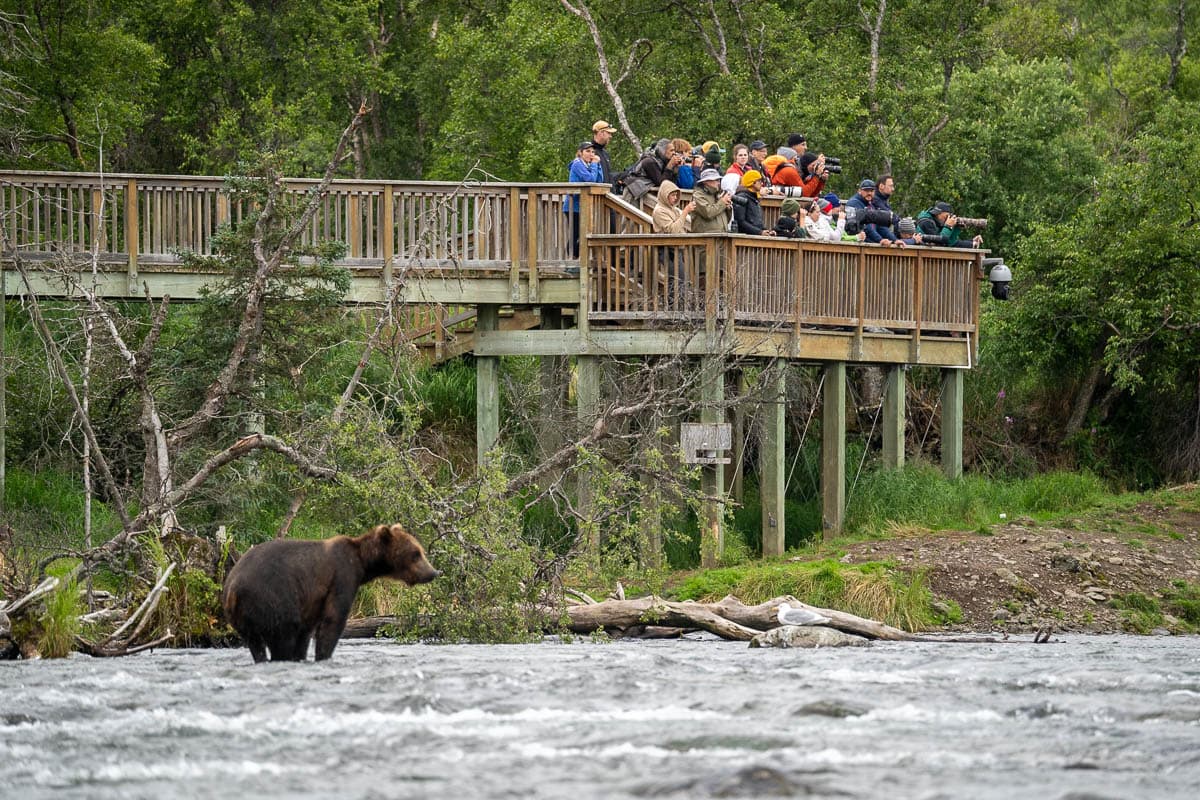
Additionally, if you’re interested in photography, there’s a limited amount of perspectives that you can get of the bears. While you’ll have an excellent vantage point of Brooks Falls and the river itself, you’re usually confined to a pretty limited area on the small and crowded platforms.
Bear viewing from Brooks River
If you’re looking for a more private or adrenaline-inducing experience, consider picking up a $6 permit to walk off-trail and along the shores of the Brooks River. Yup, this permit lets you walk in the exact same area as the bears are ambling around in!
Essentially, the river permit gives you access to walk within 50 yards of the river (including up to 100 yards of Brooks Falls) and within the river itself.
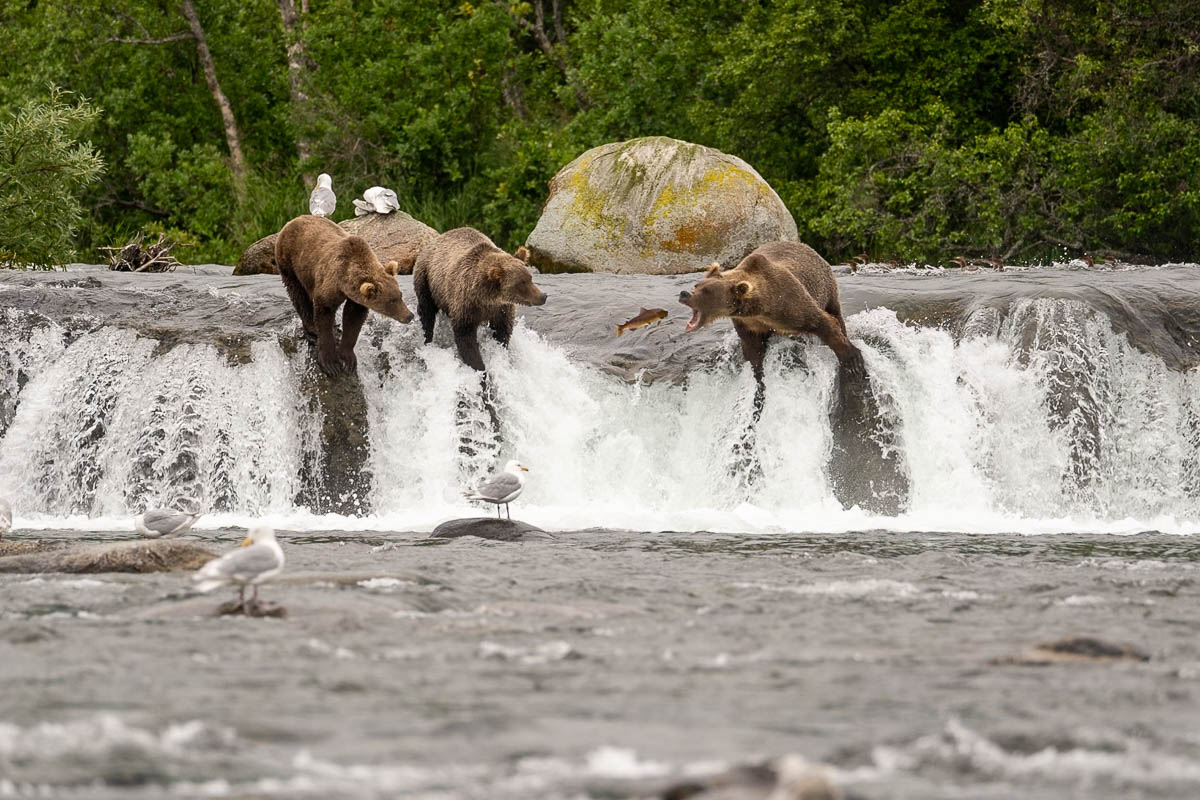
There’s WAY less visitors along the river—in fact, you’re not allowed to be within 100 yards of another group of people to ensure the bears have plenty of space to walk around you. And you can get some REALLY cool and unique perspectives of the bears, given that you can literally stand in the river WITH them as they fish for salmon!
The biggest downside to the river permit is that you constantly have to be on high alert to see whether there’s any bears walking near you. You must be at least 50 yards away from any bear at all times—not only for the safety of you and the bear, but because it’s also a federal crime!
Accordingly, it’s pretty hard to just relax and enjoy watching the bears here, given you constantly have to be looking around to see if you need to get out of their way.
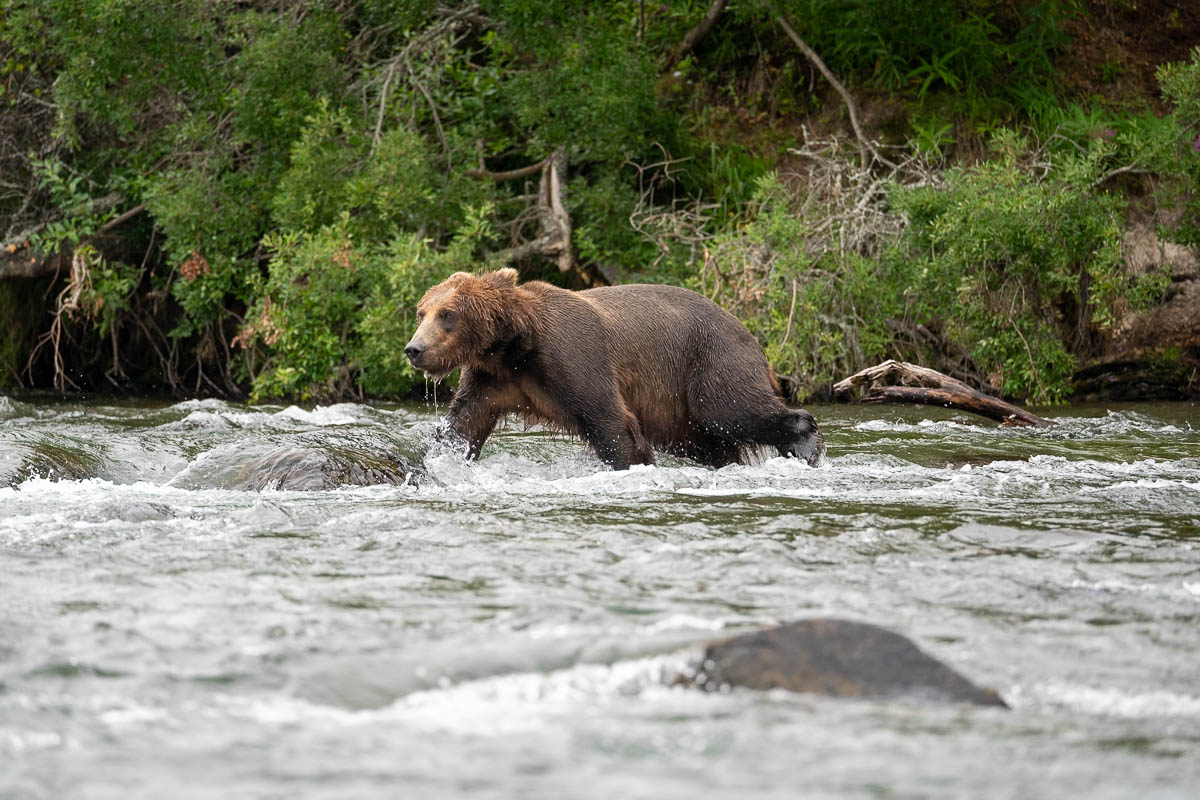
Justin and I stayed in Katmai for four days and picked up a river permit and some waders from Brooks Lodge on our second day in the park. Getting to be (and take photos!) at eye-level of these enormous creatures is ABSOLUTELY one of the best things to do in Katmai National Park—I don’t know anywhere else in the world where you can just stand 50 yards away from about a dozen bears fishing for salmon!
If you don’t feel confident enough to just wander around Brooks River by yourself, there’s some photography tours that you can join, where a guide will lead you around the shoreline and help you keep an eye out for any wayward bears nearby. Brooks Lodge offers guided photography tours of Brooks River, which I’ve heard great things about.
Watching bears outside of Brooks Camp
If you visit Katmai outside of when the salmon is running in Brooks River (mid-July through the beginning of August and the end of August through early September), you likely won’t find any bears along the Brooks River, who rapidly abandon the water when there’s no salmon present. Instead, the bears will likely be in the more remote, coastal areas of the park, like Hallo Bay or Swishak Lagoon.
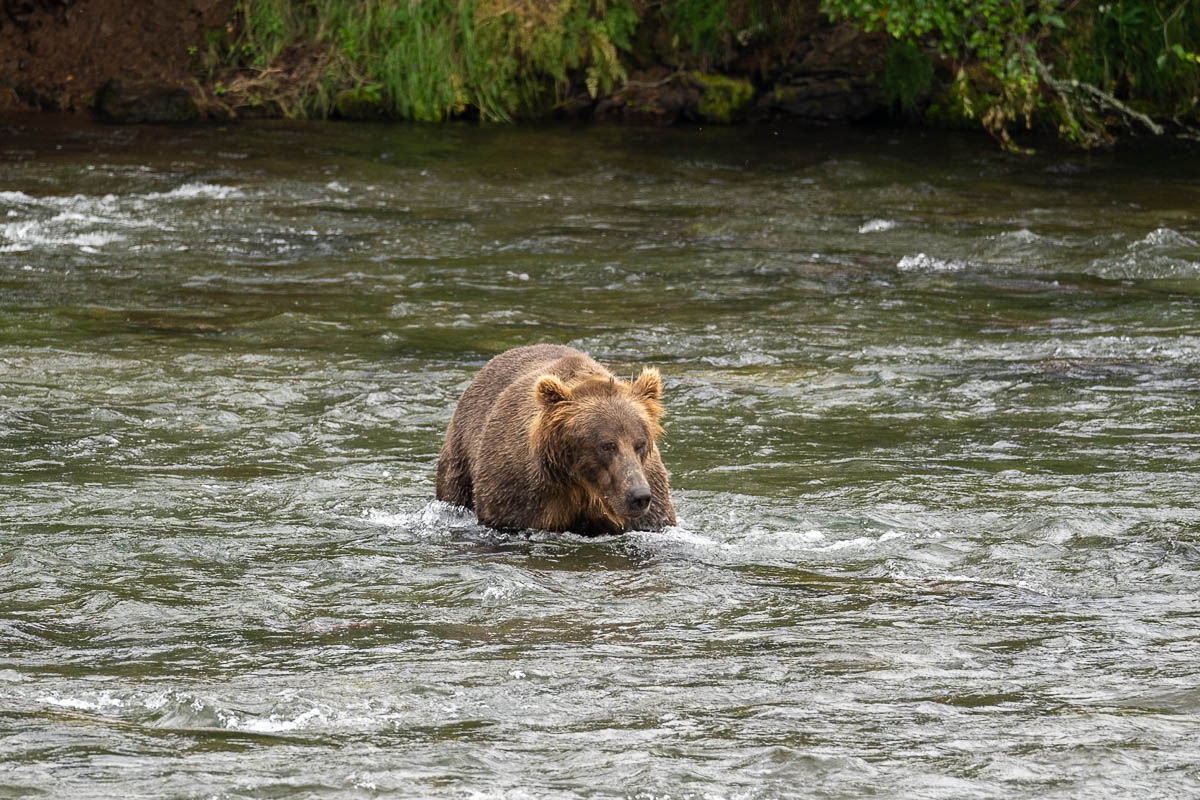
You can absolutely see bears during this period of time. However, you will almost certainly need to be with a guided (and, usually, expensive) tour that can help you get to these more remote areas of the park, which are only accessible by bush planes. The national park has a super helpful chart regarding where and when you can see bears in Katmai.
For example, Destination Adventure Alaska Company and Northwind Aviation offer day trips to Hallo Bay, which is the best place to see bears in the park if you’re visiting in June. Alternatively, Kingfisher Aviation offers tours to Geographic Bay, which is the best place to see bears from mid to late August.
When to Visit Katmai National Park for Bears
The best time for bear viewing in Katmai National Park is either in July or September, when there’s usually several dozen bears fishing for salmon at one time Brooks Falls. That being said, you’ll usually have decent luck going in late June or early August, although it always depends on whether the salmon are running.
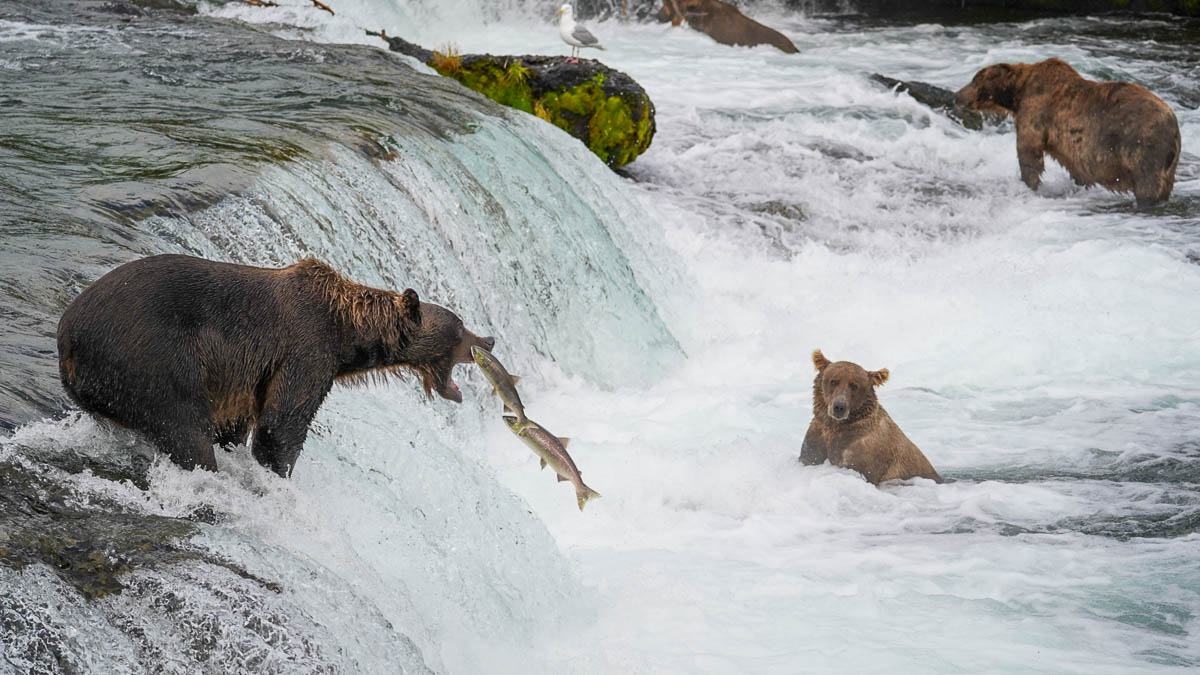
For context, Justin and I went to Katmai from August 8 through 11.
The first couple of days we were in the park, there were around eight brown bears in Brooks Falls at any given time, which we were THRILLED about. That’s eight more than I had ever seen before!
However, by our third day in the park, the salmon had stopped running so the bears had dwindled down to just one or two at the falls at one time. But, there was a HUGE school of salmon (tens of thousands of fish!) that we saw resting up in Brooks River for their swim upstream that probably started their journey to Brooks Falls a day or two after we left Katmai—meaning there was almost certainly a bunch of bears that returned to the Brooks Falls a few days later.
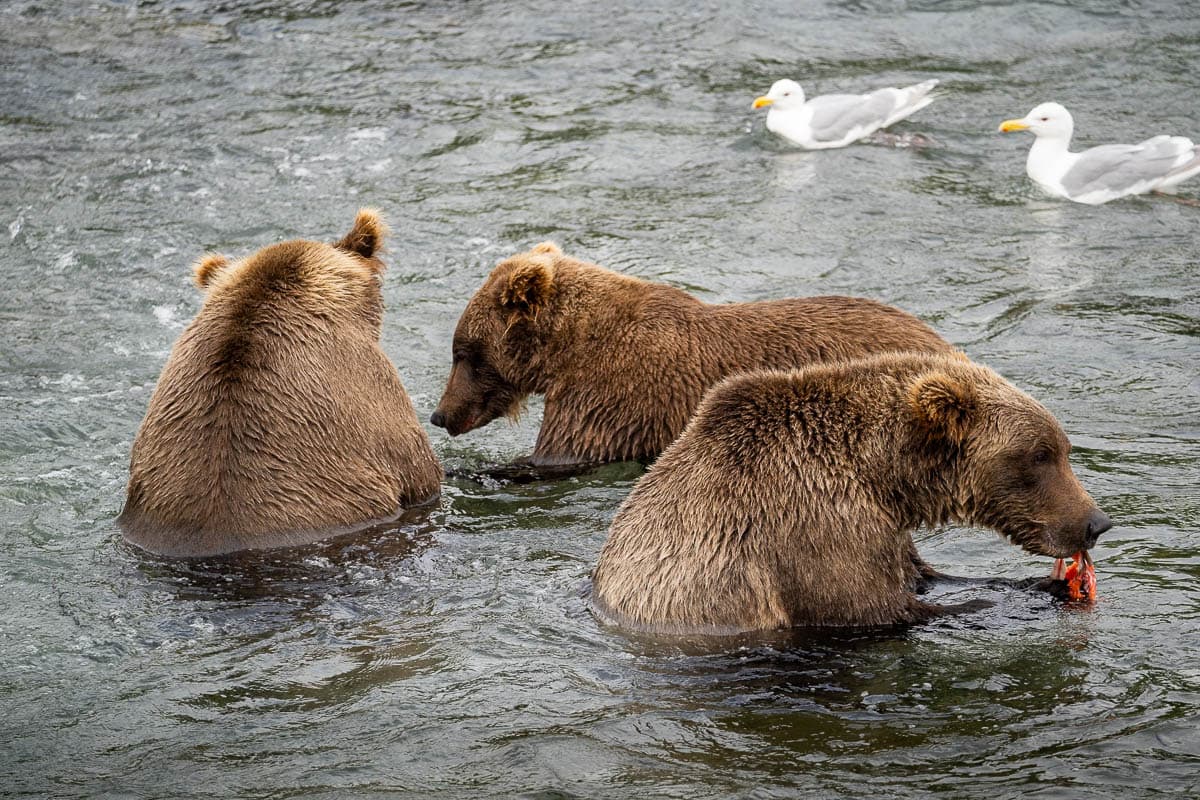
So don’t despair if you can’t time your visit for prime bear viewing season—you can usually still have a great experience during the shoulder periods!
However, if you’re visiting Katmai too far outside of July or September (e.g., at the beginning of July or mid-August), you might want to consider booking a tour for an area outside of Brooks Camp for your best chance of seeing bears.
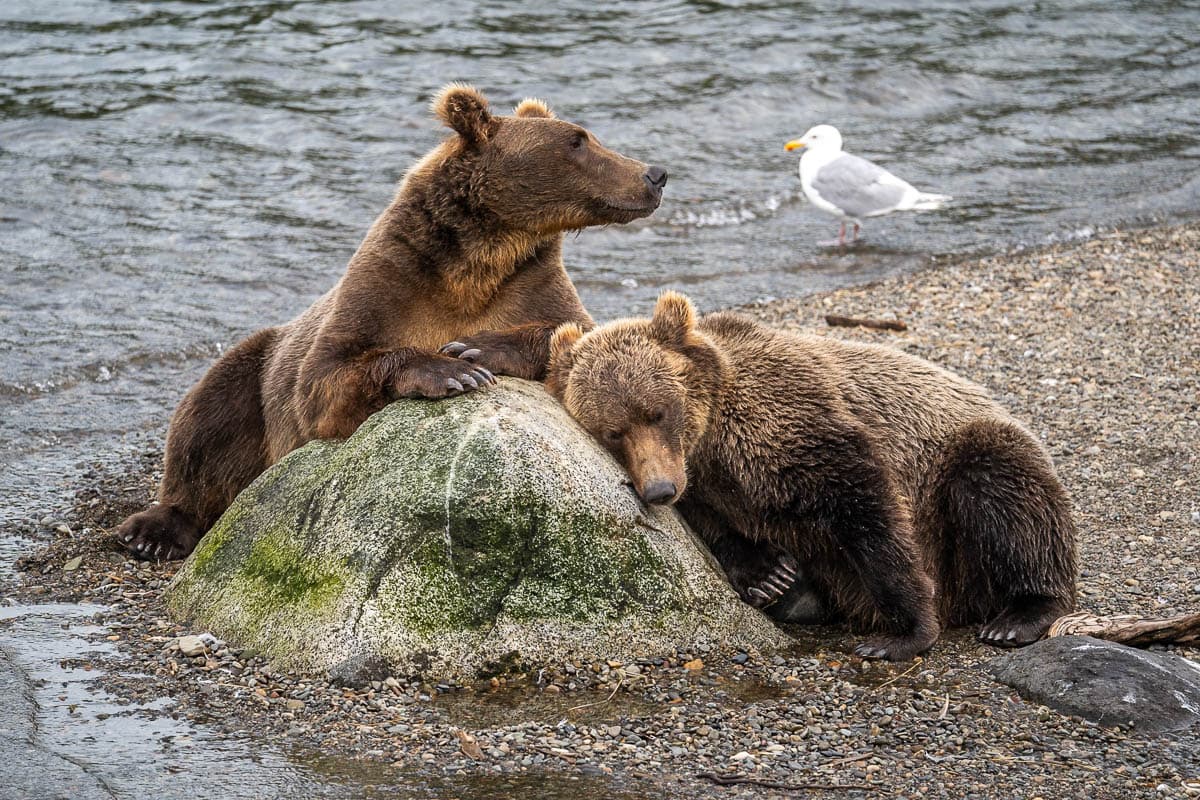
It’s worth mentioning that it’s EXTREMELY challenging to get to the park anytime outside of June through mid-September, as the tours and service operators stop going to Katmai. So, while it’s theoretically possible that you could see bears in the park in May or October, you’d essentially have to get a private charter to the park.
How to Get to Katmai National Park
We actually wrote an entire article about how to get to Katmai National Park, but there’s essentially two ways to get here—either by joining a tour or arranging your own transportation.
Taking a tour to Katmai
Most visitors to the park join a day trip that’s organized by a tour operator.
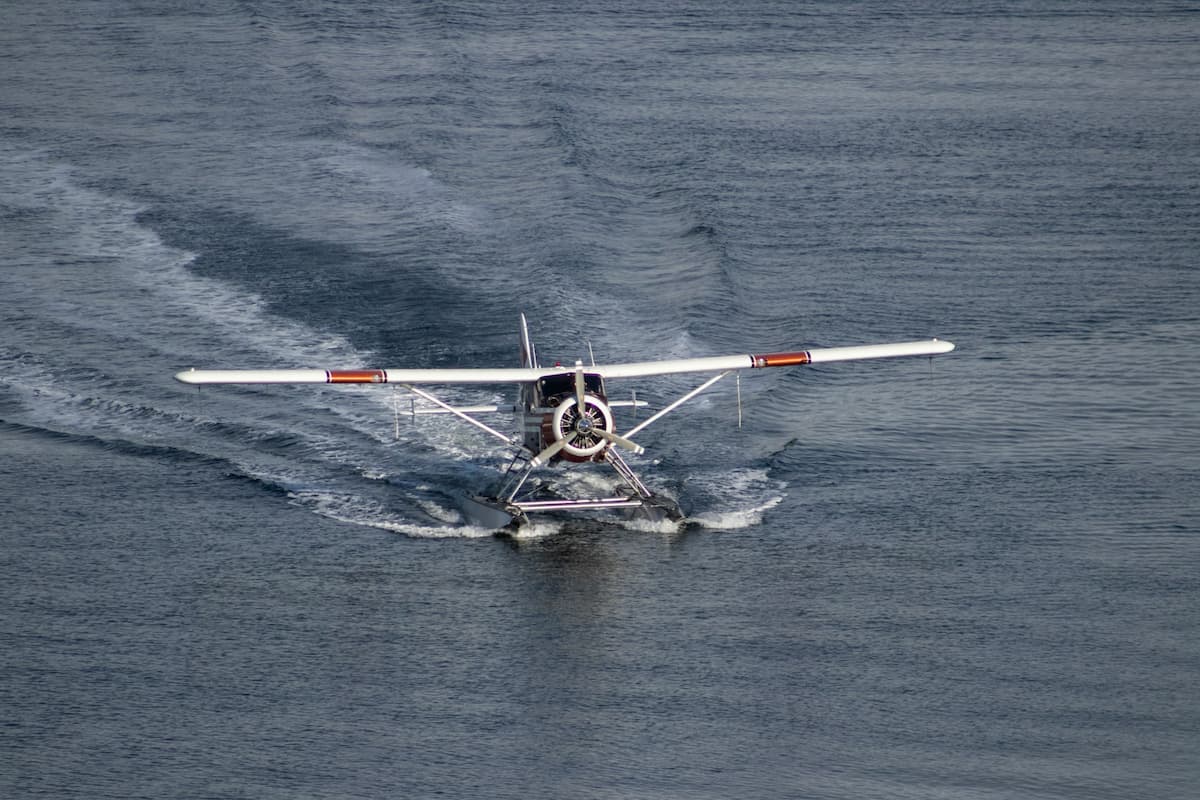
It’s a bit logistically challenging to figure out transportation to Katmai and it’s incredibly common for flights or boat rides to get significantly delayed or even canceled, due to the extreme weather here (I should know—it happened to Justin and me while we were already in Katmai, without cell service or internet!). But, if you’re visiting Katmai with a tour, they’ll wind up planning and handling all the logistics, including if anything goes wrong, for you.
The most popular place for Katmai tours to leave from is Homer, a bustling cruise port on the southern coastline of Alaska, famous for its halibut fishing and colorful downtown. One of the benefits of taking a tour from Homer is that, unlike other departure points, you’ll fly directly to Katmai, instead of making a transfer in the town of King Salmon. For example, consider this seaplane tour or this tour to Brooks Falls if Homer is already on your Alaska road trip itinerary.
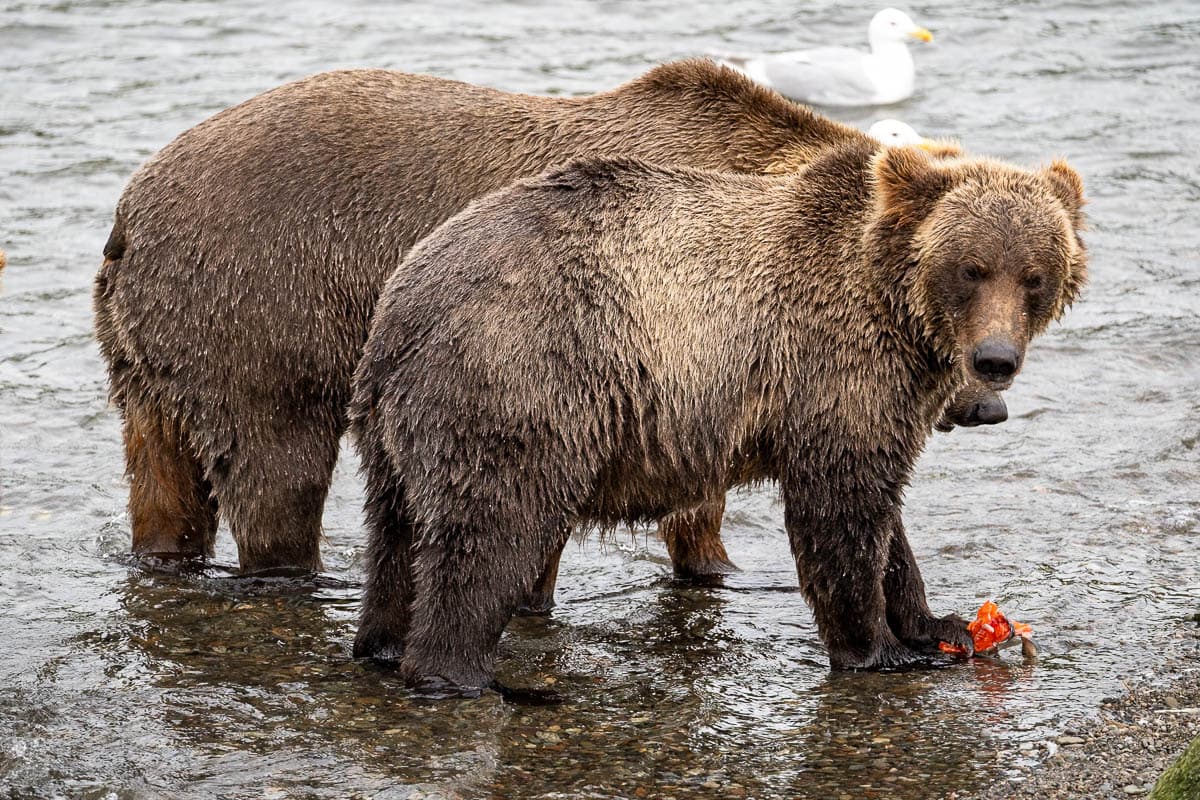
Another popular departure point is Anchorage, although, as mentioned above, you’ll need to transfer in the small town of King Salmon. There’s a handful of operators, like Katmai Air and Fly Katmai, that offer day tours from Anchorage.
Planning your own trip to Katmai
If you’re on a budget, it really isn’t too challenging to just plan your own trip to Katmai during peak bear viewing season at Brooks Falls.
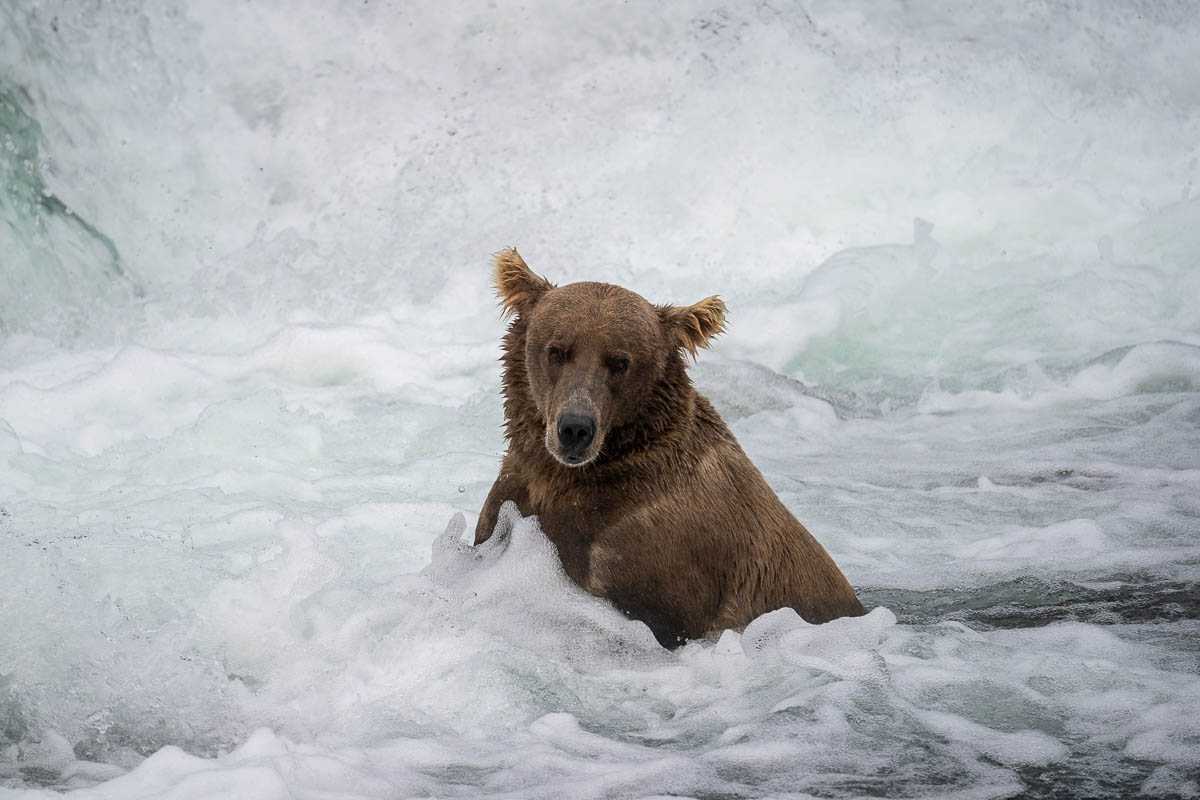
Justin and I planned our own transportation here and, while we definitely had a few major hiccups (namely, our return boat ride getting canceled when we had no access to the Internet or cell service to figure out an alternate way home), it saved us quite a bit of money.
Essentially, you’ll first need to fly to the teeny town of King Salmon, which is known as the gateway to Katmai. There’s a handful of commercial operators, like Alaska Air, Horizon Air, or Via Air, that offer direct flights from Anchorage.
From King Salmon, you can either fly to Brooks Camp in Katmai through Katmai Air or by taking the Katmai Water Taxi Service.
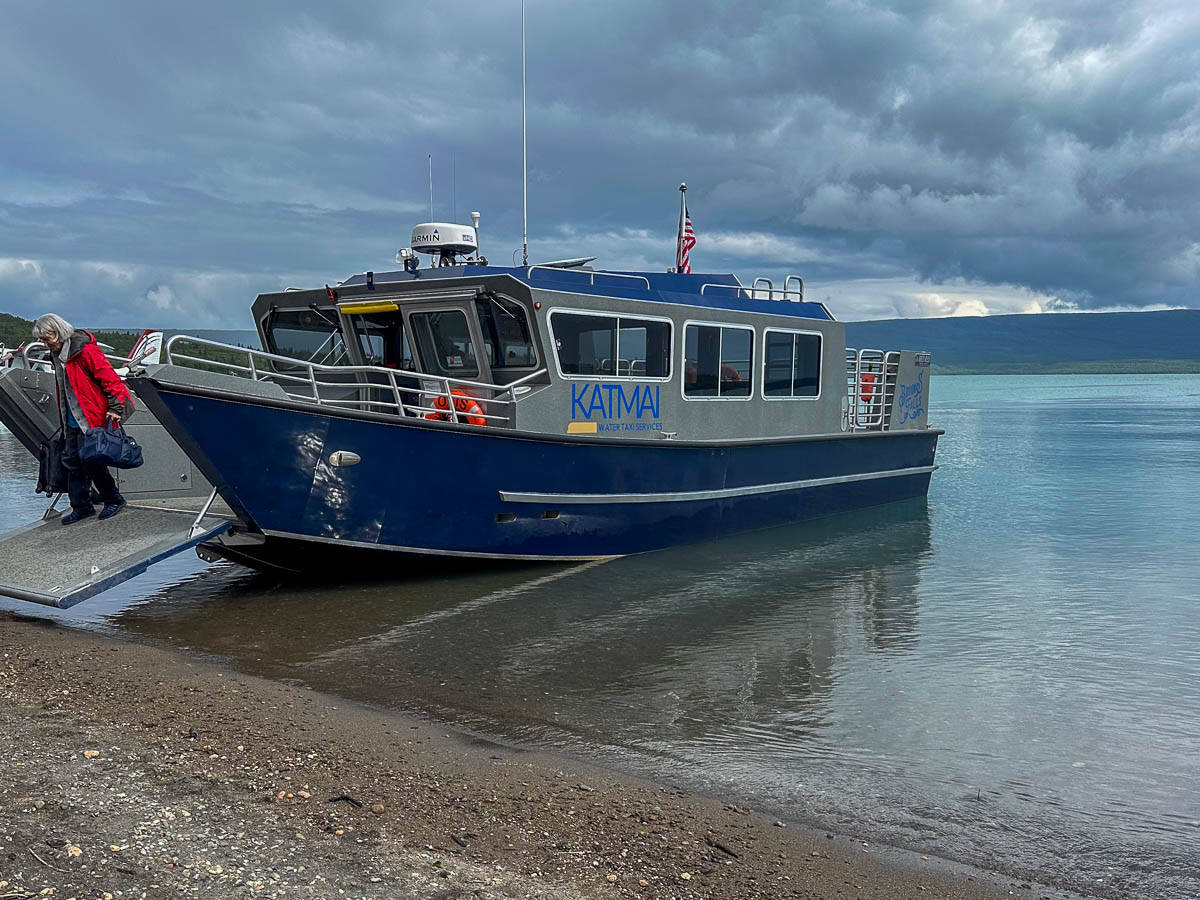
If you learn anything from this article, it would be to learn from our mistake and take the float plane from King Salmon with Katmai Air and not the Katmai Water Taxi.
We originally booked our transportation through the Katmai Water Taxi, given that, at the time, it was slightly cheaper than flying (they now cost the same), and I had assumed that the water taxi would generally be canceled less frequently than flights, in this area with notoriously bad weather.
However, this wasn’t the case at all. We later found out that Katmai Air rarely cancels flights, whereas the water taxi is frequently canceled for days at a time. Like, for example, when we went to Katmai—the water taxi told us, once we were dropped off in the park and without cell service and Internet, that they had canceled our return trip back to the park (in addition to the following four days), due to the weather forecast.
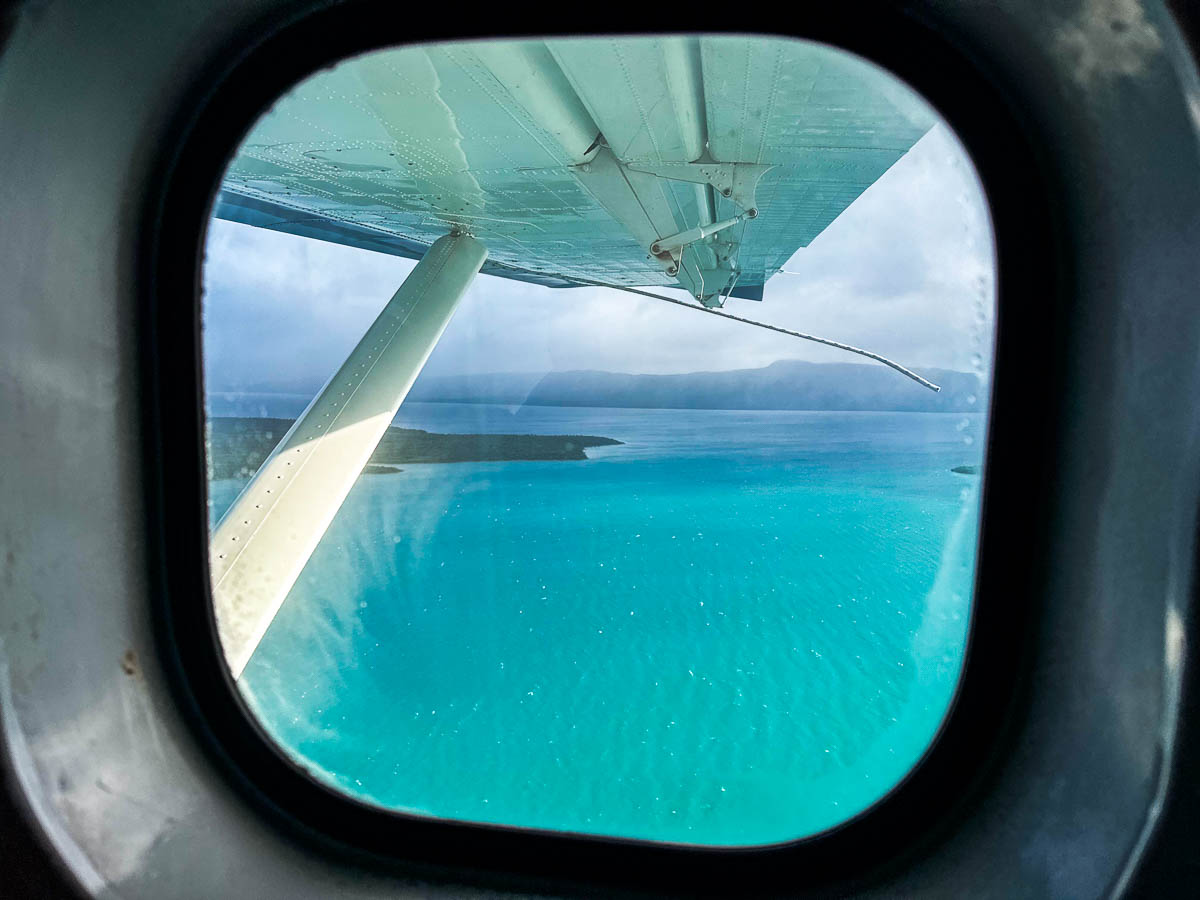
This caused a number of problems. For one, we didn’t know how to get back to King Salmon for our flight back to Anchorage and had no way to look up alternative means of transportation in the park. For another, all boat rides through the water taxi are non-refundable—meaning if the water taxi itself cancels your trip, you’ll have no recourse to get your money back.
Plus, the staff at Katmai Water Taxi were, at best, unhelpful and, at worst, quite rude throughout the entire experience.
In the end, we wound up booking a ticket back to King Salmon with Katmai Air, who conveniently have an office in the park, whose staff was friendly and kind, AND who provide a full refund in the event they do have to cancel a flight.
Tips for Bear Viewing in Katmai National Park
Be aware of tripod restrictions
From mid-June through mid-August, you’re not allowed to use tripods or rail mounts on the Brooks Falls platform, due to how crowded it gets. So if you’re a photographer and visiting during this timeframe, be sure to bring a monopod, a tripod that can double as a monopod, or a body-mounted stabilizer.
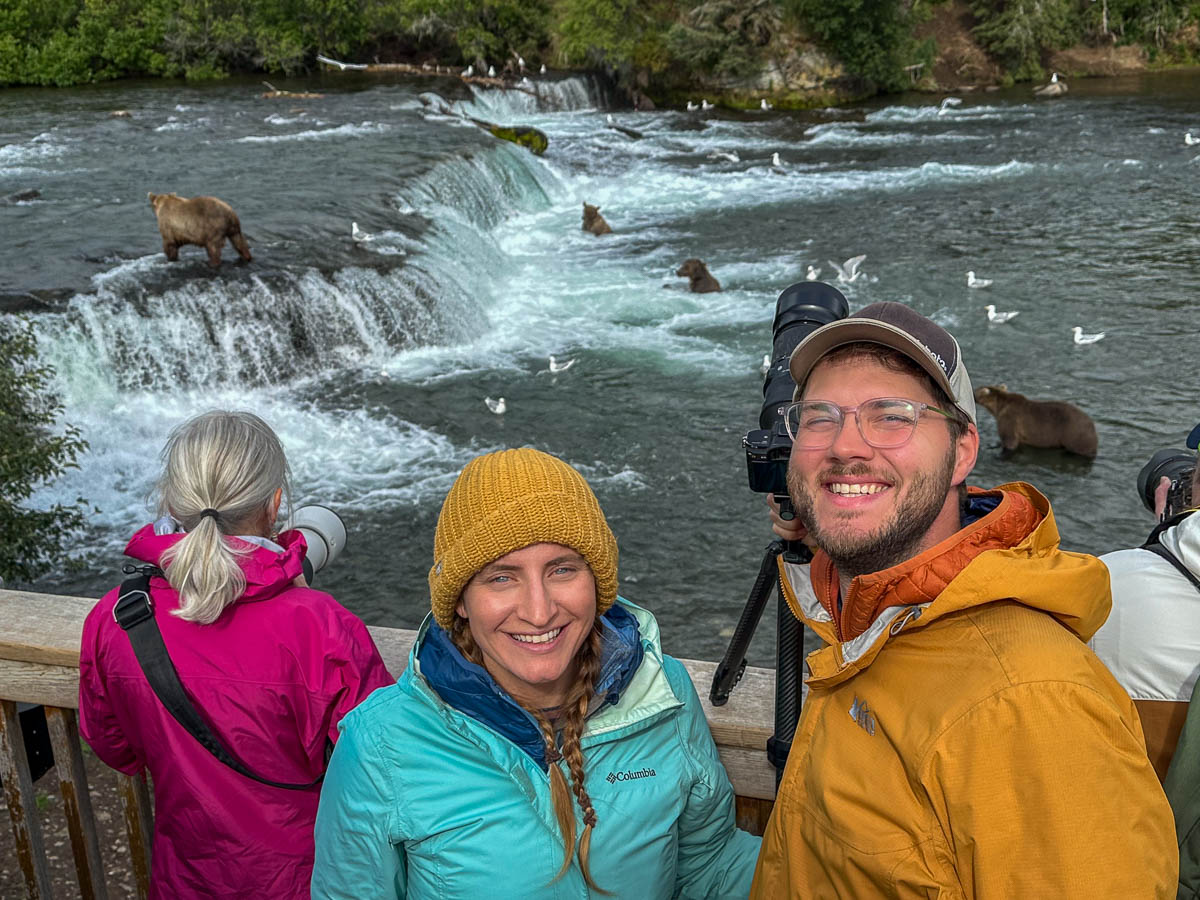
We used our trusty Peak Design Travel Tripod as a monopod on the Brooks Falls platform and as a tripod as we were standing in Brooks River to photograph the bears—and it was a rock star in both functions.
Bring along a zoom lens
If you visit Brooks Falls during peak bear season, you can definitely get some amazing shots of the bears with a wide angle lens.
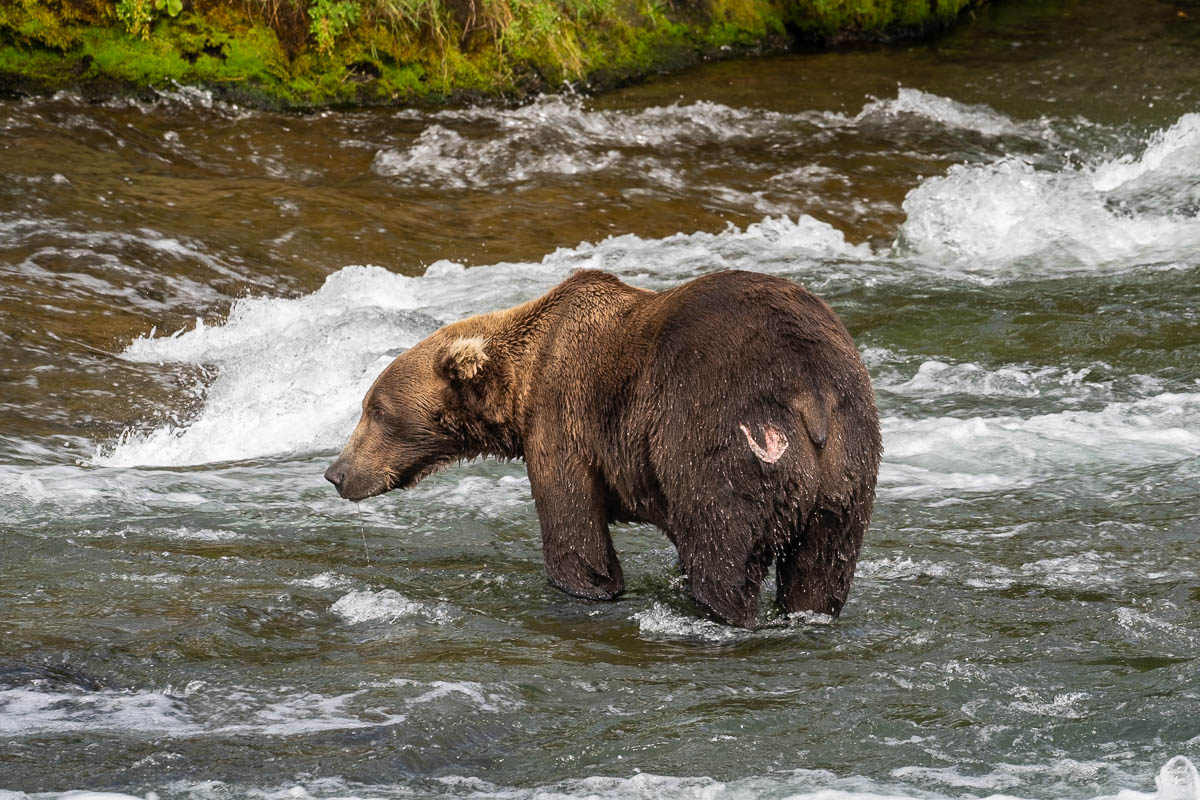
However, if you’re a photographer, we’d recommend bringing along at least a 400mm lens (600mm lens for a crop sensor camera) to get the best photos, especially in other areas of the park other than Brooks Falls. For example, there’s a bridge over the Brooks River, close to the visitor center and Brooks Lodge, where we always saw bears snorkeling in the distance—but even our 400 mm lens couldn’t reach them! We wish we had brought a lens extender to get some more unique photos in Katmai.
And, even if you’re not a photographer, I’d recommend bringing along some binoculars so you can see bears that are further away. We wound up watching two bears displaying territorial behaviors with our binoculars that we’d otherwise would have never spotted!
There you have it—everything you need to know about bear viewing in Katmai National Park. Do you have any questions about seeing bears in this magical corner of the country? Let us know in the comments below!
